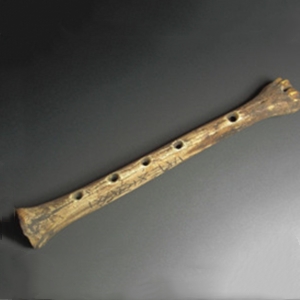Gudi overview

Bone flute (pinyin: gǔ dí), is a kind of flute, also known as eagle flute, eagle bone flute, jay, first discovered 8,000 years ago, Tibetan, Tajik, Kirgiz edge-edge air-sounding musical instruments, often used for solo.
The body of the bone flute is mostly made of the wing bones of the eagle, and also the leg bones of the crane. Bone flutes have different specifications, lengths and thicknesses.
Due to the different eagle bones used in bone flutes, there are also differences in sound: eagle flutes made of eagle bones have hard bones, fine bone lines, smooth surfaces, long and thick bone tubes, and low pitch. The tone is strong; the eagle flute made of eagle bone is not as good as the eagle bone, the bone tube is short and drizzled, the tone is high, and the tone is bright. The Eagle Flute can be played solo, in ensemble, or accompanied by singing and dancing. The folk eagle flute band is usually composed of four people. Two men play the eagle flute and two women accompany the hand drum. The eagle flute plays the upper and lower phrases in turn. Sometimes both of them play at the same time. One plays the main melody, and the other adds flowers.
- type:edge air musical instrument
- nickname:Eagle Flute, Eagle Bone Flute
- Pinyin:gǔ dí
- first discovered:8000 years ago
overview of other similar instruments
- sanyanxiao overview
- Daguangxian overview
- Leiqin overview
- hahao overview
- yandundagu overview
- Han Xiaozheng overview
- Fang Xiang overview
- guanzi overview
- zhuqin (Dao Qin) overview
- zhuiqin overview
- bangzi overview
- three-stringed piano overview
- Gehu overview
- xiao overview
- xiaokonghou overview
- Konghou overview
- Sheng overview
- suona overview
- hulusi overview
- gushao overview
 渝公网安备 50010702504639号
渝公网安备 50010702504639号